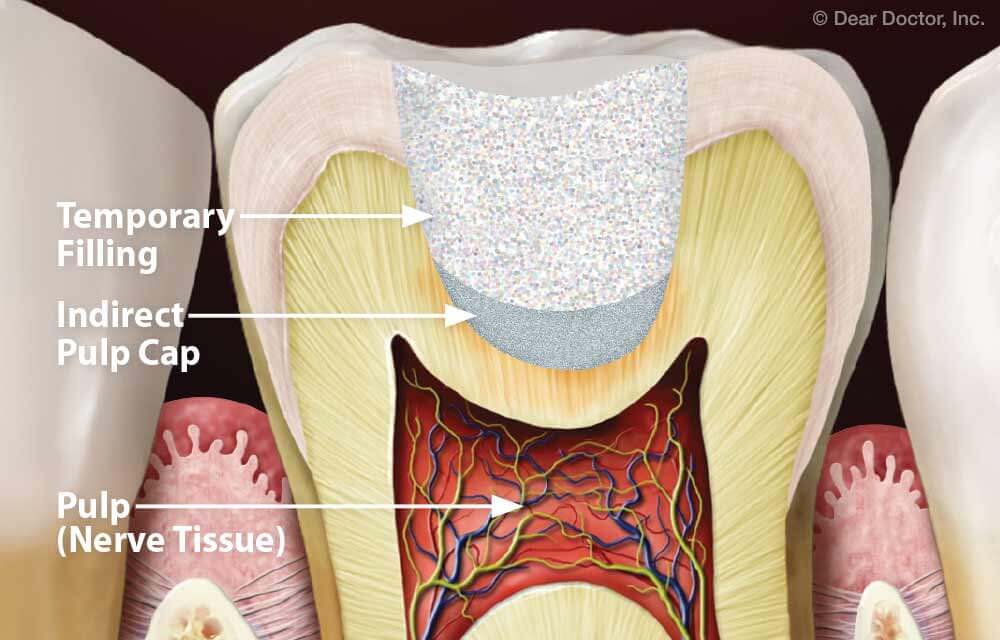The Comprehensive Guide to dental code indirect pulp cap: Procedures, Materials, and More
1. Introduction to Indirect Pulp Capping
Indirect pulp capping is a vital dental procedure that bridges the gap between conservative dentistry and endodontic treatment. It is a technique used to preserve the vitality of the dental pulp when it is at risk of exposure due to deep caries or trauma. This procedure is particularly significant in cases where the pulp is not yet exposed but is close to being compromised. By placing a protective material over the nearly exposed pulp, dentists can stimulate the formation of reparative dentin, thereby avoiding the need for more invasive treatments like root canal therapy.
The importance of indirect pulp capping lies in its ability to maintain the natural tooth structure and function, which is always preferable to extraction or extensive restorative work. This article will delve into the dental codes associated with indirect pulp capping, the step-by-step procedure, the materials used, and the clinical considerations that ensure successful outcomes.

2. Dental Code for Indirect Pulp Cap: ADA Code and CDT Code
ADA Code for Indirect Pulp Capping
The American Dental Association (ADA) provides specific codes for dental procedures to ensure uniformity in billing and documentation. For indirect pulp capping, the ADA code is D3120. This code falls under the category of “Pulp Cap—Indirect (excluding final restoration).” It is essential for dental professionals to use this code accurately when billing for the procedure to avoid discrepancies.
CDT Code for Indirect Pulp Capping
The Current Dental Terminology (CDT) code for indirect pulp capping is also D3120. The CDT codes are updated annually by the ADA to reflect advancements in dental practices and technologies. Using the correct CDT code ensures that insurance claims are processed smoothly and that the procedure is documented correctly in the patient’s records.
Table 1: Dental Codes for Indirect Pulp Capping
| Procedure | ADA Code | CDT Code |
|---|---|---|
| Indirect Pulp Cap | D3120 | D3120 |
3. The Indirect Pulp Capping Procedure: Step-by-Step Guide
The indirect pulp capping procedure is a meticulous process that requires precision and attention to detail. Below is a step-by-step guide to performing this procedure:
Step 1: Diagnosis and Treatment Planning
- Conduct a thorough clinical examination, including radiographic imaging, to assess the extent of caries and the proximity to the pulp.
- Determine the vitality of the pulp using thermal or electric pulp testing.
- Decide whether indirect pulp capping is the appropriate treatment based on the patient’s symptoms and clinical findings.
Step 2: Isolation and Anesthesia
- Isolate the tooth using a rubber dam to ensure a dry and contamination-free working environment.
- Administer local anesthesia to ensure patient comfort during the procedure.
Step 3: Caries Removal
- Remove the bulk of the carious lesion using a high-speed handpiece.
- Leave a thin layer of affected dentin over the pulp to avoid direct exposure.
Step 4: Application of Pulp Capping Material
- Place a biocompatible material, such as calcium hydroxide or mineral trioxide aggregate (MTA), over the remaining dentin.
- Ensure that the material is securely placed and covers the entire area of near-exposure.
Step 5: Temporary Restoration
- Seal the tooth with a temporary restoration, such as glass ionomer cement, to protect the pulp capping material.
- Schedule a follow-up appointment to monitor the pulp’s response to the treatment.
Step 6: Final Restoration
- After confirming the success of the indirect pulp capping procedure, proceed with the final restoration, such as a composite filling or crown.
4. Materials Used in Indirect Pulp Capping
The success of an indirect pulp capping procedure largely depends on the materials used. Below are some of the most commonly used materials:
Calcium Hydroxide
- Properties: Alkaline pH, promotes the formation of reparative dentin.
- Advantages: Biocompatible, easy to use, and cost-effective.
- Disadvantages: May dissolve over time, requiring reapplication.
Mineral Trioxide Aggregate (MTA)
- Properties: High pH, excellent sealing ability, and bioactive.
- Advantages: Promotes hard tissue formation, durable, and suitable for long-term use.
- Disadvantages: Expensive and may cause tooth discoloration.
Glass Ionomer Cement
- Properties: Adhesive, fluoride-releasing, and biocompatible.
- Advantages: Provides a good seal, easy to handle, and prevents secondary caries.
- Disadvantages: Less effective in promoting dentin formation compared to calcium hydroxide and MTA.
5. Clinical Considerations and Best Practices
Patient Selection
- Ideal candidates for indirect pulp capping are patients with deep caries but no signs of irreversible pulpitis or pulp necrosis.
Follow-Up Care
- Regular follow-up appointments are crucial to monitor the pulp’s response and ensure the success of the procedure.
Potential Complications
- Pulp exposure during caries removal.
- Failure of the pulp capping material to stimulate dentin formation.
- Development of pulpitis or necrosis requiring root canal therapy.
6. FAQs on Indirect Pulp Capping
Q1: What is the difference between direct and indirect pulp capping?
- A: Direct pulp capping is performed when the pulp is already exposed, while indirect pulp capping is done when the pulp is nearly exposed but still covered by a thin layer of dentin.
Q2: How long does an indirect pulp capping procedure take?
- A: The procedure typically takes 30 to 60 minutes, depending on the complexity of the case.
Q3: Is indirect pulp capping painful?
- A: No, the procedure is performed under local anesthesia, ensuring patient comfort.
Q4: What is the success rate of indirect pulp capping?
- A: The success rate ranges from 70% to 90%, depending on the material used and the patient’s oral health.
7. Conclusion
Indirect pulp capping is a conservative and effective treatment for preserving pulp vitality in teeth with deep caries. By understanding the dental codes, mastering the procedure, and selecting the right materials, dental professionals can achieve successful outcomes and improve patient satisfaction.


